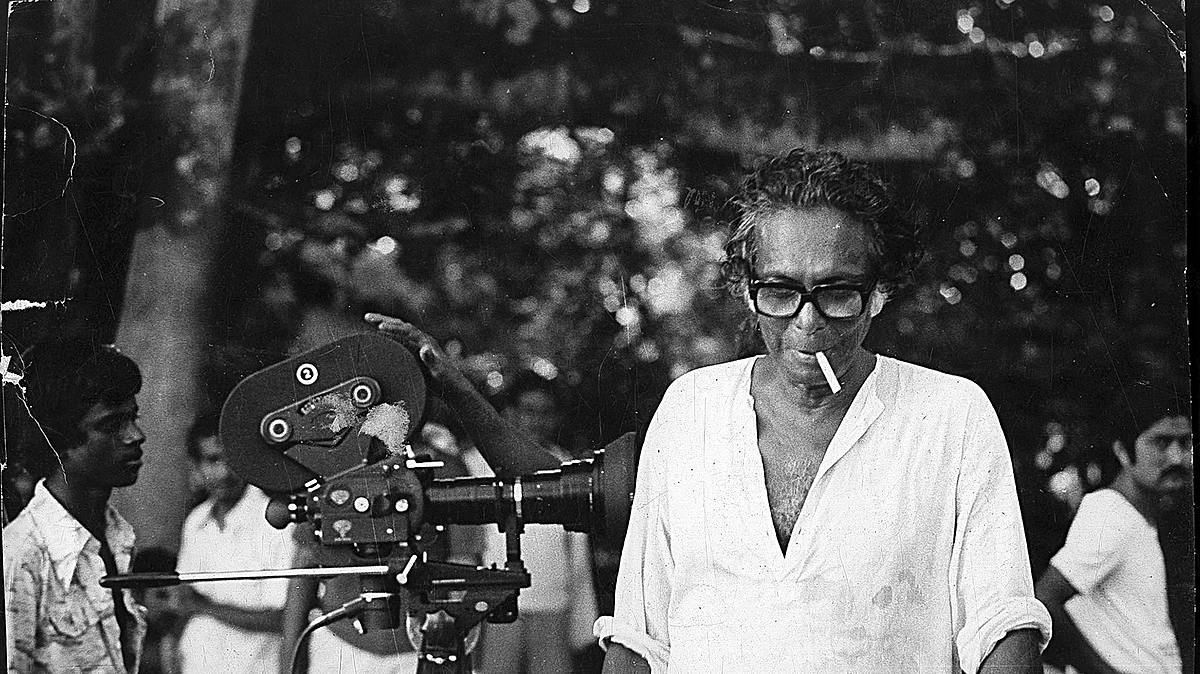Mrinal Sen: Last of the Mohicans
Sen’s films will be remembered for their vivid portrayal of the times, the politics and society with unwavering honesty, just as he lived life. Bengali cinema lost the last of its legendary auteurs

The last of the Mohicans, the last of the “Big Three” directors of Bengali cinema who dominated the medium of parallel cinema in the latter half of the 20th century, breathed his last on December 30. Ritwik Ghatak died in 1976 and Satyajit Ray in 1992. Mrinal Sen’s death truly marks the end of an era.
I last met Mrinal Sen at his Bhowanipore residence in 2007 when I went to him to seek his opinion on Bengali films being made in the first few years of the 21st century. He said, “Many of today’s filmmakers are unsure of their politics and that confusion shows in their works.” As a filmmaker, political ambiguity was something nobody could ever accuse Sen of. He was a Marxist filmmaker and remained one till the very end. He was not to be found on the intellectual caravan that migrated from the Left to the Trinamool camp when Mamata Banerjee defeated the Left Front in 2011. May be that explains omission of his name when the state government felicitated prominent film personalities of the state in 2012.
I knew Mrinal Sen from my childhood as his association with my grandfather, playwright and actor Bijon Bhattacharya who also acted in Padatik, one of Sen’s popular films, dated back to pre-Independence days when they were both closely associated with Indian People’s Theatre Association (IPTA). After my grandfather’s death, my father, the writer Nabarun Bhattacharya, had stayed in intermittent touch with the filmmaker. So had my grandmother, writer and activist Mahasweta Devi. Also, Ritwik Ghatak happened to be my grandmother’s uncle and an extremely close friend of Bijon Bhattacharya. So there were multiple connections. And anyway, the intellectual circle in Kolkata used to be very close-knit those days. So, every year in Kolkata, there would be at least two to three social events or get-togethers where we would bump into him.
Sen is often dismissed by many cinephiles as the ‘third man’ in the troika. I came across this word in the middle of a heated debate during my college days in the Indian Coffee House on College Street in Kolkata. Two of my friends were arguing who was greater: Ray or Ghatak? This remains a favourite pastime of Bengalis till date and the issue is clearly far from settled.
Kolkata comes alive as a living entity in many of Mrinal Sen’s films
I am no film critic but it is undeniable that Sen’s body of works includes Bhuvan Shome, Chorus, Akaler Sandhane, Mrigayaa, Calcutta 71, Kharij, Padatik, Akash Kusum, Oka Oori Katha, Parashuram and several others, all significant works which sensitively portray the society and politics of a period. The Calcutta Trilogy consisting of Padatik, Calcutta 71 and Interview are favourites of mine. They depict the intensity of the city in turbulent times. Even in his other films like Punashcha and Mahaprithibi, Kolkata comes alive as a living entity with its class contradictions, chaotic streets and people’s struggle.
Mrinal Sen’s visibility in the international film festival arena and his numerous awards from festivals like Cannes, Venice, Berlin, Moscow, Karlovy Vary among others also led to greater receptivity of Bengali films abroad. But this is also true that Ray had already prepared ground for this much before Sen.
Many of Sen’s critics have raised their fingers at the apparent failure of Sen to inspire a significant next generation of filmmakers like Ghatak did with Mani Kaul, John Abraham, Adoor Gopalakrishnan, Kumar Shahani and Ketan Mehta. This is a criticism that Ray also faced. However, I think such criticism is not valid as Ghatak, alongside making films, also taught students at FTII, Pune where a lot of these next generation filmmakers came to study. Sen also made the most number of non-Bengali language films out of the Big Three. He even directed a Telugu language film Oka Oori Katha for which he won a National Award. He has directed three Hindi language films, all of which won critical claim.
I have always found Mrinal Sen’s cinematic style plain and linear as compared to Ray and Ghatak, generally conforming to the structure of political films as defined by the film festival circuit. But that, I also agree, was his signature style. He has written about the influence of Latin American filmmakers on himself. So, Sen’s style was more derivative which did not leave room for the rounded sophistication of Ray’s works or the sharp, raw, experimental edges of Ghatak’s films where Ghatak breaks all cinematic grammar.
There was an unwritten intense competition between the Big Three as to who was superior. And while their egos clashed, it seldom went beyond the borders of civility.
Sen’s films will be remembered for their vivid portrayal of the times, the politics and the society with unwavering honesty, just like he lived his life. Bengali cinema has lost the last of its legendary auteurs.
Follow us on: Facebook, Twitter, Google News, Instagram
Join our official telegram channel (@nationalherald) and stay updated with the latest headlines
- Mamata Banerjee
- Kolkata
- Bengali cinema
- Indian People’s Theatre Association
- Ritwik Ghatak
- Mrinal Sen
- Marxist filmmaker
- Bhowanipore
